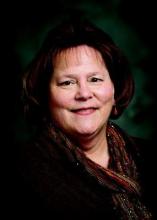In an effort to update nearly decade-old guidance on the effectiveness of brief, formal screening in primary care for speech and language delays in young children, the U.S. Preventive Services Task Force (USPSTF) recently issued a new review on the topic. Its final recommendation: The current evidence is insufficient to assess the balance of benefits and harms of screening for speech and language delay and disorders in children age 5 years and younger.
The task force’s recommendation is troubling for several reasons. Undoubtedly, more research in this area is needed. However, insufficient evidence for screening is not counter-evidence. I fear this may be easily interpreted as such based on the limited language put forth by the USPSTF. Especially concerning is the possibility that current screening practices will be scaled back in some way based upon this recommendation.
The good news is the speech and language disorders are treatable. The bad: They appear to be spiking among U.S. children.
A 2014 study published in Pediatrics (doi: 10.1542/peds.2014-0594) showed a 63% increase in disability associated with speech problems in children from 2001 to 2011. While some of that rise is probably attributable to cases of autism spectrum disorder, which were not tracked for this particular study, there is no doubt speech and language problems are trending upward.
Clearly, this is not the time to cut back on screening for conditions that stand to be debilitative and life-altering if left unchecked. Without general population screening, I fear many diagnoses will be missed during children’s most critical developmental window. This could be especially true for some of society’s most vulnerable – children who live in poverty. Doing away with screening could contribute to holding them down and back their whole lives.
Despite the USPSTF review panel’s ultimate recommendation, its recent article in Pediatrics (doi: 10.1542/peds.2014-3889) actually made a strong case for screening:
“Young children with speech and language delay in the preschool years may be at increased risk for learning disabilities once they reach school age.”
“Estimates of the increased risk for poor reading outcomes in grade school are 4 to 5 times greater for children with speech and language impairment than for children with appropriate development; risk persists into adulthood.”
“Adults who had speech and language disorders as children may hold lower-skilled jobs and are more likely to experience unemployment than other adults.”
“Behavior problems and impaired psychosocial adjustment associated with speech and language may also persist into adulthood.”
Moreover, building on the USPSTF’s 2006 review on the same topic, the new review did find evidence that supports the effectiveness of treating speech and language delays and disorders in children.
Beyond the substantial benefits of early intervention, a number of other factors argue for pediatrician involvement in screening. These include:
• Ease and appropriateness of screening at well-child visits. Screening has already been successfully incorporated into routine pediatrician visits at times when a variety of other developmental milestones also are being tracked. As pediatricians are the only health professionals that most children reliably see during their early years when intervention is key, another opportunity for screening would be difficult to identify.
• Lack of evidence of harm from screenings. There is inadequate evidence of any harm from screening in primary care settings. I struggle to find a downside that comes anywhere close to the potential benefit of identifying a child early.
• Evidence of effective screening tools. There is robust evidence that at least two parent-administered screenings have high sensitivity and specificity, and can accurately identify children for diagnostic evaluations and interventions. This is included in the USPSTF review, but it is not highlighted.
• Availability of specialized professionals. There are more than 148,000 certified speech-language pathologists nationwide who are extensively trained to identify and treat speech and language disorders. Pediatricians are encouraged to refer any patients with suspected problems to these certified professionals. A searchable directory is available at www.asha.org/profind. More information about certification and credentials is available at www.ASHACertified.org.
Current American Academy of Pediatrics clinical guidelines recommend surveillance at well-child visits. They specify ages 9, 18, and 24 or 30 months as appropriate for screening. While the USPSTF review raises the need for more research and other important points, I encourage pediatricians to continue the practice of general screening. Doing so will be to the benefit of our nation’s children, who are increasingly grappling with communication and other developmental disorders.
Dr. Page is the 2015 president of the American Speech-Language-Hearing Association and an associate professor in the division of communication sciences and disorders at the University of Kentucky, Lexington.


